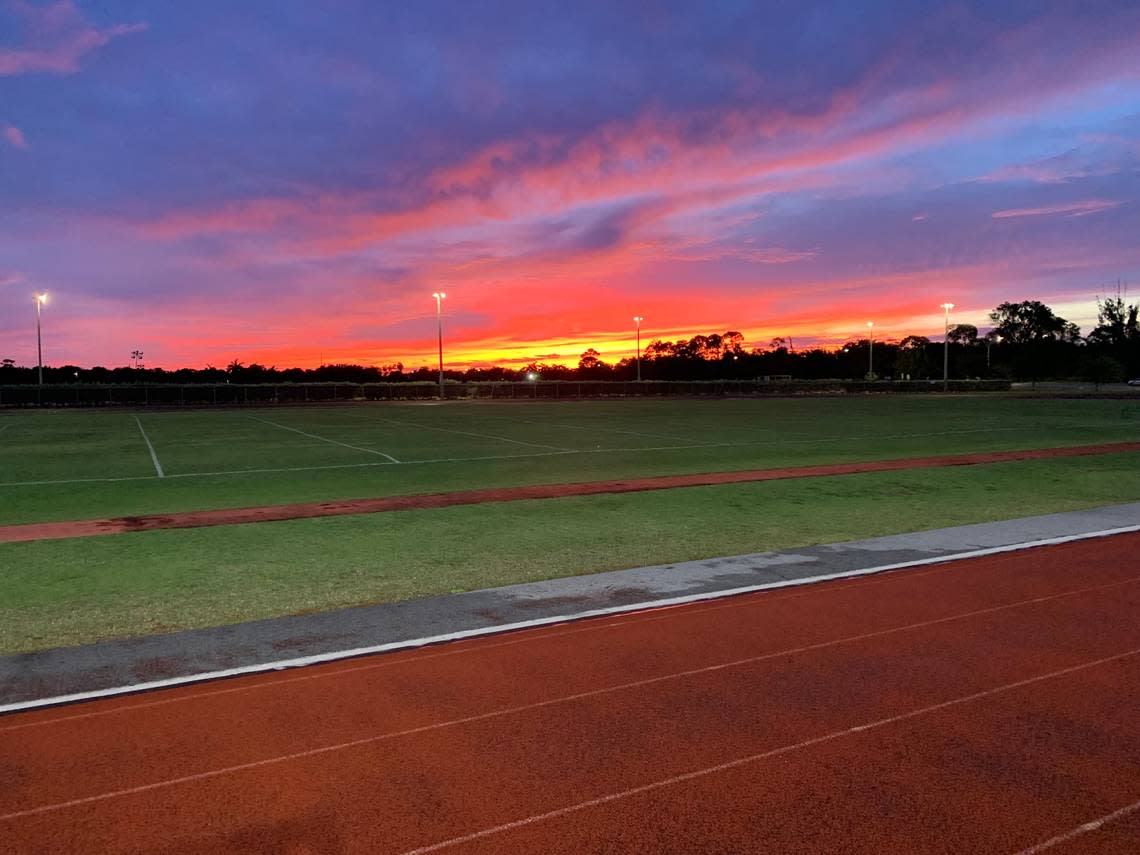Saharan dust is coming to Florida. Here’s how it can affect hurricanes and your health

First came the floods. Then the mosquitoes. Now, South Florida, get ready for the dust.
A large plume of Saharan Dust — the first of the year — is forecast to reach Florida later this week. This is usually good news for the tropics, but bad for allergies and respiratory issues. And it ramps up the heat in an already sweltering summer.
Here’s what to know:
Where is the Saharan Dust now? When will Florida feel it?
The Saharan dust is in the far eastern Atlantic and is expected to affect the U.S. Virgin Islands late Monday and eventually Puerto Rico by Tuesday, according to the National Weather Service in San Juan. The plume of dust is expected to near Florida Thursday, according to the National Weather Service in Miami.
“Most of the dust is aloft at 5,000 - 15,000 feet in the atmosphere,” and will need to travel more than 5,000 miles across the Atlantic to near Florida, WINK News Chief Meteorologist Matt Devitt wrote on X, formerly Twitter.
Saharan dust is “a mass of very dry, dusty air that forms over the Sahara Desert during the late spring, summer, and early fall,” according to the National Oceanic and Atmospheric Administration.
Devitt expects the dust will move across parts of Florida and the Gulf of Mexico later this week and into the weekend. This isn’t unusual, millions of tons of dust is blown from Africa each year, and Florida always get some of the plumes.
How will Saharan dust affect Miami, other parts of Florida?
It’s too soon to know how much dust South Florida and other parts of the state will see this week, according to the National Weather Service. That means it’s still too soon to know how the dust will affect weather, and your sinuses too.
But because Florida isn’t a stranger to the dust, here’s what tends to happen when the dust comes:
▪ TRANQUILIZER FOR THE TROPICS: Saharan dust helps weaken and suppress tropical cyclone formation and intensification, according to the National Weather Service and NOAA. That’s great news for the forecast of a busy hurricane season.
READ MORE: New preseason hurricane forecast is highest ever issued. Brace yourself, Florida
▪ RESPIRATORY PROBLEMS: Saharan dust can irritate people’s eyes, ears, noses and throats. If you have allergies or respiratory health issues like asthma or chronic bronchitis, you may want to stay indoors and take your allergy medication.
READ NEXT: Are you sneezing your head off? Why Miami and other Florida cities are suffering
▪ BEAUTIFUL SUNSETS: Mother Nature tends to paint beautiful sunsets across Florida when there’s Saharan dust in the air so get your cameras and hashtags ready for those picture perfect views!
▪ HOTTER WEATHER: While Saharan dust can help calm the tropics, it can also ramp up the heat a lot. And Florida summers are already H-O-T, so make sure to monitor the forecast before heading outside.
▪ RED TIDE, MAYBE? “The dust can transport bacteria, which can lead to algal blooms like red tide,” and has also “been known to negatively impact coral reefs,” Devitt says. That’s a bummer, especially for scientists who are trying to save the state’s struggling coral reefs.
HEADS UP! Saharan Dust for the first time this year is projected to move across parts of Florida and the Gulf of Mexico later this week into the weekend.
Most of the dust is aloft at 5,000 - 15,000 feet in the atmosphere as it travels over 5,000 miles across the Atlantic.… pic.twitter.com/JrrknJhptw— Matt Devitt (@MattDevittWX) June 24, 2024
What the Miami-area forecast shows
Remember, the National Weather Service in Miami says it’s still too soon to know if there will be enough Saharan dust in the atmosphere to affect South Florida’s weather later this week into the weekend.
But, for now, the forecast is calling for scattered thunderstorms daily through at least Sunday. The strongest storms could have gusty winds and heavy downpours, with slow-moving storms causing localized flooding, according to the weather service’s hazardous weather outlook.
And it’s gonna be hot, with Miami-Dade and Broward counties expected to see temperatures in the low 90s and it’s going to feel much hotter. The weather service predicts “feel like” temps could be more than 100 every day, with the heat index — how hot it feels — possibly going up to 110 late in the week.
Sounds like a typical Florida summer.
Miami Herald staff writer Howard Cohen contributed to this report.


